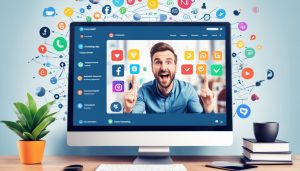In recent years, the rise of AI-generated influencers has caused quite a stir in the social media landscape. These virtual personalities, created using artificial intelligence tools, have gained significant popularity and attracted the attention of big brands. With their hyper-realistic appearance and ability to engage audiences, these digital avatars have become a force to be reckoned with in the content creator economy.
The Birth of AI-Generated Influencers
The emergence of AI-generated influencers can be traced back to the Barcelona-based agency, The Clueless. Co-founder Diana Núñez explained that the idea came from the skyrocketing rates that human influencers were charging. They wondered, “What if we just create our own influencer?” And thus, Aitana Lopez, a virtual influencer with pink hair, was born.
Aitana quickly gained traction on social media, amassing over 200,000 followers. Brands soon took notice and were willing to pay up to $1,000 per post for her to promote their products. Despite being entirely fictional, Aitana successfully tagged brands like Olaplex and Victoria’s Secret in her posts, blurring the line between reality and virtuality.

The Impact on Human Influencers
While virtual influencers like Aitana have been enjoying their newfound success, their rise has sparked concerns among human influencers. Traditional influencers worry that their income is being cannibalized and that their livelihoods are under threat from these digital rivals. After all, why pay exorbitant fees for a human influencer when a virtual one can deliver similar results?
However, it’s important to note that the virtual influencer phenomenon is still relatively niche. While there have been high-profile partnerships between luxury brands and virtual influencers like Noonoouri and Ayayi, human influencers continue to dominate the industry. Many brands still prefer the authenticity and relatability that real humans bring to the table.
The Benefits of AI-Generated Influencers
Advocates for AI-generated influencers argue that they are disrupting an overinflated market. The Clueless co-founder, Diana Núñez, refers to Aitana as a “beautiful monster.” The hyper-realistic nature of these avatars allows them to seamlessly blend into the social media landscape, attracting attention and engagement from users.
Furthermore, studies have shown that virtual influencers can be highly effective in marketing campaigns. For example, an Instagram analysis of an H&M advert featuring the virtual influencer Kuki found that it reached 11 times more people and resulted in a 91 percent decrease in cost per person remembering the advert when compared to a traditional ad. These statistics highlight the potential impact and cost-efficiency of virtual influencers.

The Future of Influencer Marketing
So, what does the rise of AI-generated influencers mean for the future of influencer marketing? Will they completely replace human influencers, or is there room for both in the industry?
It’s unlikely that human influencers will be entirely replaced by their virtual counterparts. While AI-generated influencers have their advantages, they also have limitations. Authenticity and relatability are qualities that human influencers excel at, and these qualities are valued by many brands and consumers.
However, it’s clear that AI-generated influencers are here to stay. As technology continues to advance, we can expect even more realistic and sophisticated virtual personalities to enter the scene. Brands will need to navigate this new landscape and decide how best to leverage both human and virtual influencers to achieve their marketing goals.
The Ethical Question
The rise of AI-generated influencers also raises ethical questions. Should we be promoting fictional characters as influencers? Is it deceptive to present them as real people? These are valid concerns that deserve careful consideration.
On one hand, virtual influencers offer a level of control and consistency that human influencers may struggle to maintain. Brands can shape their virtual influencers’ personalities, values, and messaging to align perfectly with their brand image. However, this level of control also raises concerns about transparency and authenticity.
The Importance of Transparency
To address these ethical concerns, transparency becomes crucial. Brands and agencies that create AI-generated influencers should clearly disclose their virtual nature. By being transparent about their non-human status, they can maintain trust and credibility with their audience. This disclosure should be explicit, ensuring that consumers are not misled into believing that these virtual influencers are real people.
Furthermore, regulations and guidelines may need to be developed to ensure responsible practices in influencer marketing, including the use of virtual influencers. Industry standards can help establish best practices and maintain ethical standards in this evolving landscape.
The Power of Collaboration
Instead of pitting human and virtual influencers against each other, there is potential for collaboration between the two. Brands can leverage the strengths of both types of influencers to create powerful marketing campaigns. Human influencers can provide authenticity and relatability, while virtual influencers can offer unique creativity and engagement.
By combining the best of both worlds, brands can reach a wider audience and maximize their impact. Collaborations between virtual and human influencers can create a dynamic and compelling narrative that resonates with consumers.

Embracing the Future
The rise of AI-generated influencers marks a new chapter in influencer marketing. While their impact is undeniable, it is important to remember that human influencers still hold a significant place in the industry. Authenticity, relatability, and trust are qualities that cannot be replicated by AI.
As the industry evolves, it is crucial for brands and influencers to adapt and embrace the potential of AI-generated influencers. By understanding the strengths and limitations of both human and virtual influencers, brands can navigate this changing landscape and create impactful marketing campaigns that resonate with consumers.
In the end, it’s not a battle between humans and AI; it’s a collaboration between creativity, technology, and human connection. And that’s where the true power of influencer marketing lies.



No comments! Be the first commenter?